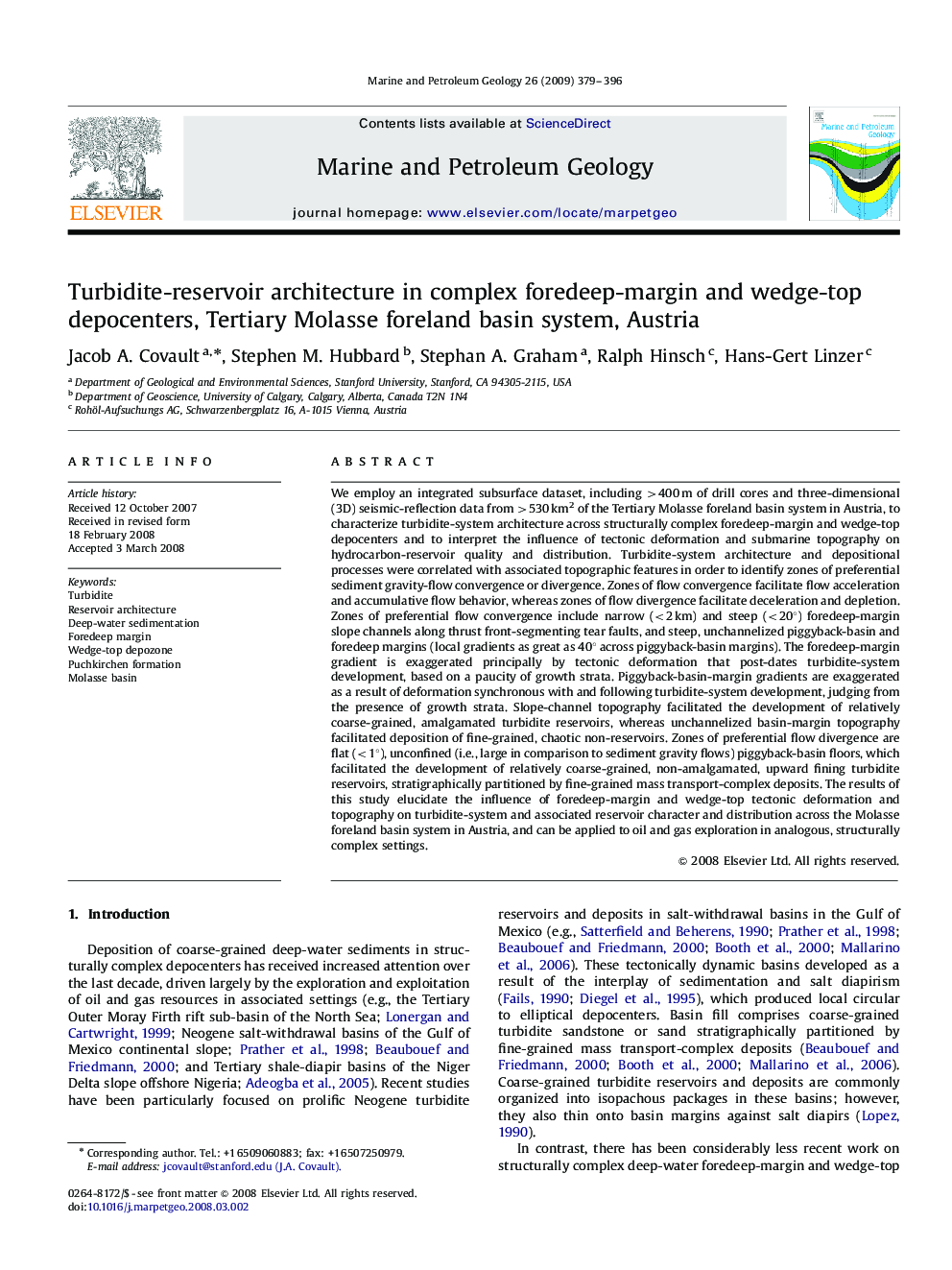| کد مقاله | کد نشریه | سال انتشار | مقاله انگلیسی | نسخه تمام متن |
|---|---|---|---|---|
| 4696377 | 1351671 | 2009 | 18 صفحه PDF | دانلود رایگان |

We employ an integrated subsurface dataset, including >400 m of drill cores and three-dimensional (3D) seismic-reflection data from >530 km2 of the Tertiary Molasse foreland basin system in Austria, to characterize turbidite-system architecture across structurally complex foredeep-margin and wedge-top depocenters and to interpret the influence of tectonic deformation and submarine topography on hydrocarbon-reservoir quality and distribution. Turbidite-system architecture and depositional processes were correlated with associated topographic features in order to identify zones of preferential sediment gravity-flow convergence or divergence. Zones of flow convergence facilitate flow acceleration and accumulative flow behavior, whereas zones of flow divergence facilitate deceleration and depletion. Zones of preferential flow convergence include narrow (<2 km) and steep (<20°) foredeep-margin slope channels along thrust front-segmenting tear faults, and steep, unchannelized piggyback-basin and foredeep margins (local gradients as great as 40° across piggyback-basin margins). The foredeep-margin gradient is exaggerated principally by tectonic deformation that post-dates turbidite-system development, based on a paucity of growth strata. Piggyback-basin-margin gradients are exaggerated as a result of deformation synchronous with and following turbidite-system development, judging from the presence of growth strata. Slope-channel topography facilitated the development of relatively coarse-grained, amalgamated turbidite reservoirs, whereas unchannelized basin-margin topography facilitated deposition of fine-grained, chaotic non-reservoirs. Zones of preferential flow divergence are flat (<1°), unconfined (i.e., large in comparison to sediment gravity flows) piggyback-basin floors, which facilitated the development of relatively coarse-grained, non-amalgamated, upward fining turbidite reservoirs, stratigraphically partitioned by fine-grained mass transport-complex deposits. The results of this study elucidate the influence of foredeep-margin and wedge-top tectonic deformation and topography on turbidite-system and associated reservoir character and distribution across the Molasse foreland basin system in Austria, and can be applied to oil and gas exploration in analogous, structurally complex settings.
Journal: Marine and Petroleum Geology - Volume 26, Issue 3, March 2009, Pages 379–396